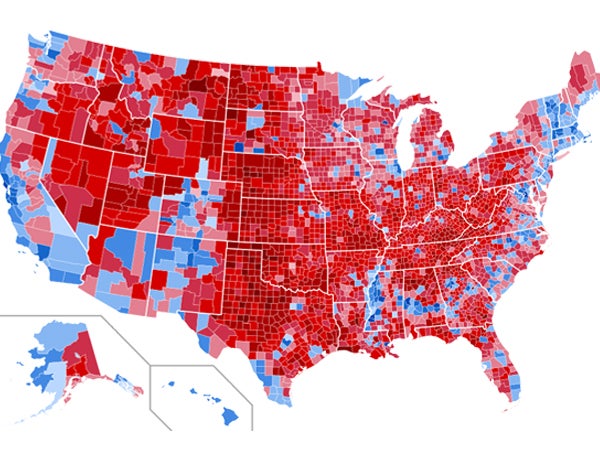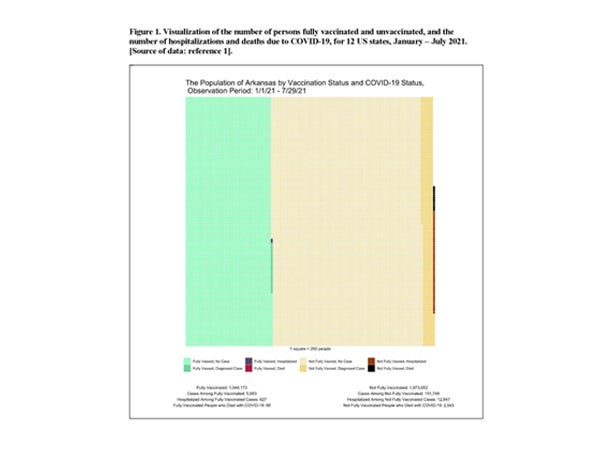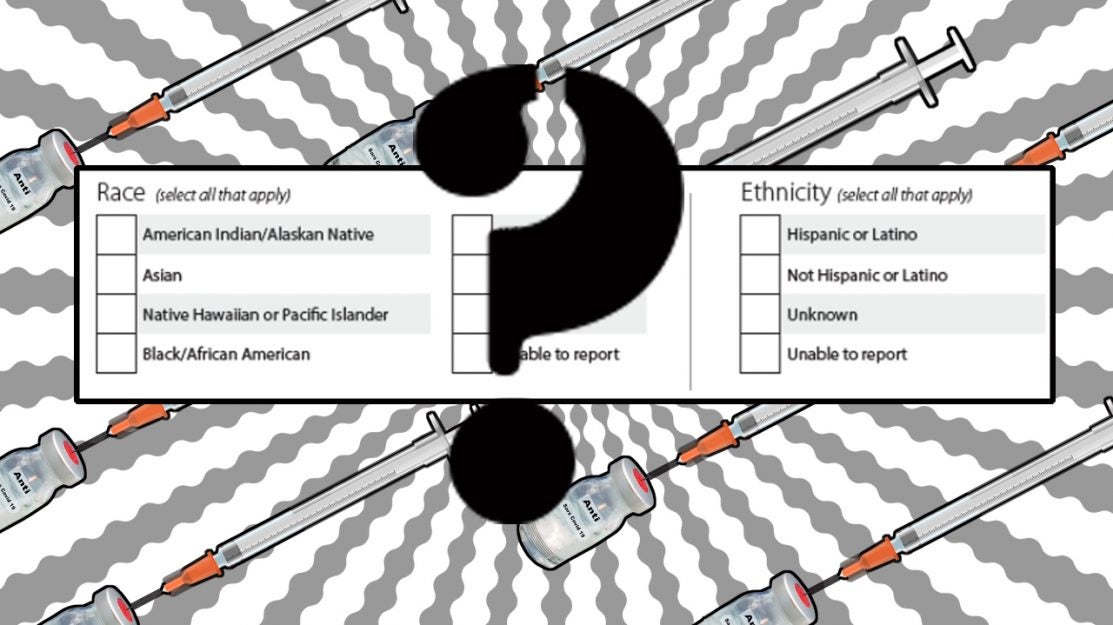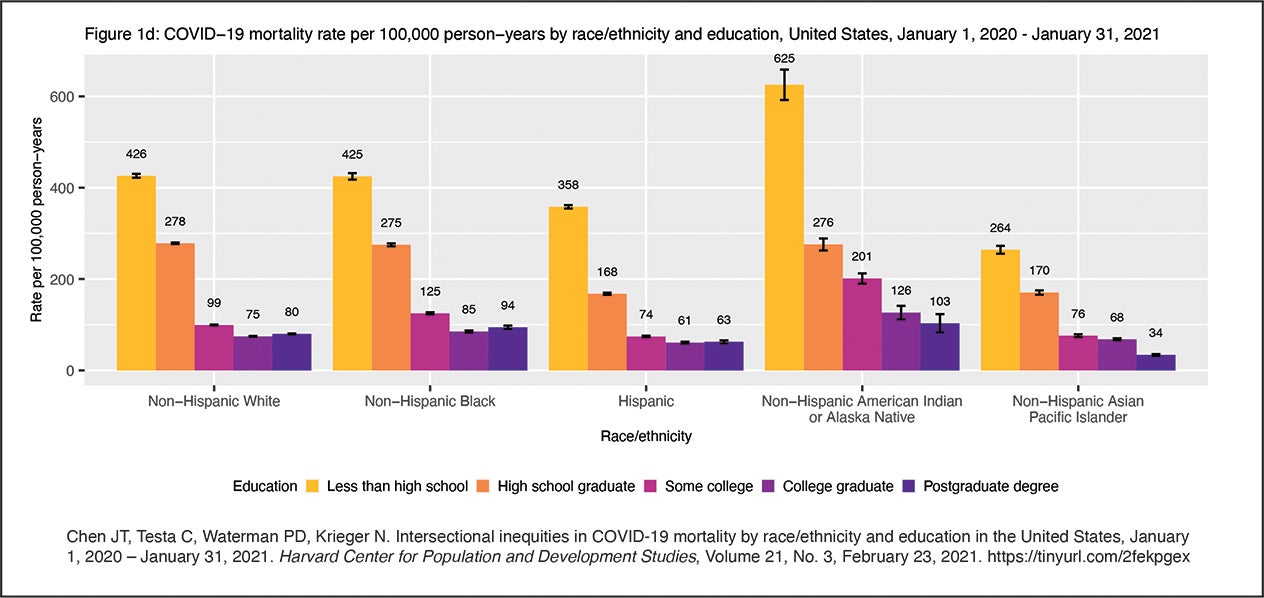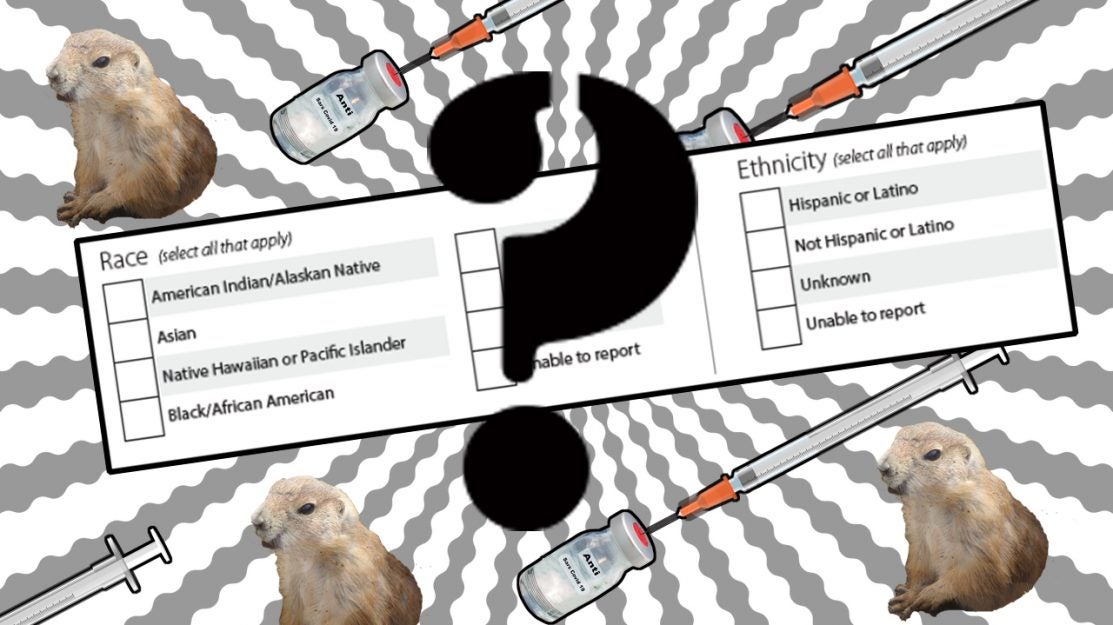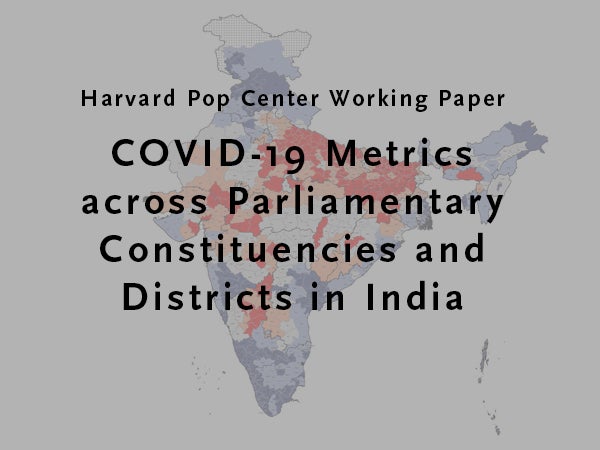We were honored to have our working paper series provide a platform for this time-sensitive article by Roby P. Bhattacharyya, MD, PhD, and William P. Hanage, PhD, on the challenges in inferring the severity of the omicron variant that is now published as a Perspective in The New England Journal of Medicine. Learn more in this press release by the Harvard T.H. Chan School of Public Health.
Authors of HCPDS working paper warn against underestimating severity of latest COVID-19 variant, Omicron
Epidemiologist William Hanage, PhD, and infectious disease specialist Roby P. Bhattacharyya, MD, PhD, have authored an HCPDS working paper (Vol. 21, No. 10) in which they caution against inferring intrinsic traits (particularly, severity) from population-level observations, such as what has been observed in South Africa. Vaccination and immunity from prior infections, for example, complicate comparisons between the population-level infection-fatality rate (IFR) of Omicron versus earlier waves (e.g., the Delta variant).
Two working papers document COVID-19 stats in light of county-level political lean and regional inequities
Two recently posted Harvard Pop Center working papers by Nancy Krieger, PhD, and her colleagues document COVID-19 cases and deaths from July 1 – September 15, 2021, spotlighting greater risk in Republican-leaning counties (particularly when coupled with higher poverty levels), and in those regions of the country with greater inequities.
“Picturing Prevention” working paper offers impactful visualizations of the protection of vaccination from hospitalization and death due to COVID-19
A Harvard Pop Center Working Paper by Jarvis T. Chen, ScD, Christian Testa, BS, William P. Hanage, PhD, and Nancy Krieger, PhD, offers vivid and simple graphics that illustrate why getting vaccinated against COVID-19 matters by depicting available data for 12 states from January – July 2021.
Now in The Lancet: US racial and ethnic data missing for COVID-19 vaccination
Harvard Pop Center Working Paper Vol. 21, No. 1, is now published as a correspondence in The Lancet.
GO BIG NOW on relief to address “commingled miseries” of COVID-19
The authors of a recent Harvard Pop Center Working Paper have pulled from this analysis of real-time data on food and housing insecurity and penned an op-ed in the New York Daily News that implores the new Biden-Harris administration to go big with relief.
Finally, a look at COVID-19 mortality rates by race/ethnicity AND EDUCATIONAL LEVEL
“Intersectional inequities in COVID-19 mortality by race/ethnicity and education in the United States, January 1, 2020–January 31, 2021,” is the latest Harvard Pop Center working paper by Jarvis Chen, Christian Testa, Pamela Waterman, and Nancy Krieger. On February 2, the US National Center for Health Statistics published data relating to COVID-19 deaths that had been missing from the government health statistics for the first year of the pandemic under the…
It’s “Groundhog Day,” AGAIN! Nearly one-half of COVID-19 vaccination data is missing race/ethnicity info., reminiscent of earlier gaps in COVID-19 case and mortality data
A Harvard Pop Center working paper points out that the Morbidity and Mortality report by the US Centers for Disease Control released on February 2 (which happened to be Groundhog Day) is missing race and ethnicity information for nearly half of the people who were vaccinated during the first month of the roll out. Age and gender information were missing from only .1% and 3% respectively. The paper calls for…
Warning against basing equitable COVID-19 vaccine distribution on static county-level social & economic data
A Harvard Pop Center Working paper warns against basing equitable COVID-19 vaccine allocation throughout the U.S. on static county-level social and economic data, as researchers find “enormous” variation (time and region) in the relationship between community characteristics and COVID-19 case and death rates per capita over the last 9 months.
Estimating COVID-19 across Parliamentary Constituencies and districts in India could facilitate better, evidence-based policy decisions
This Harvard Pop Center Working Paper presents the first estimates of COVID-19 cumulative cases and deaths per 100,000 population, and the case fatality rate (CFR) from January 7 – October 18, 2020 across 543 geopolitical units (Parliamentary Constituencies) and 721 districts of India.


